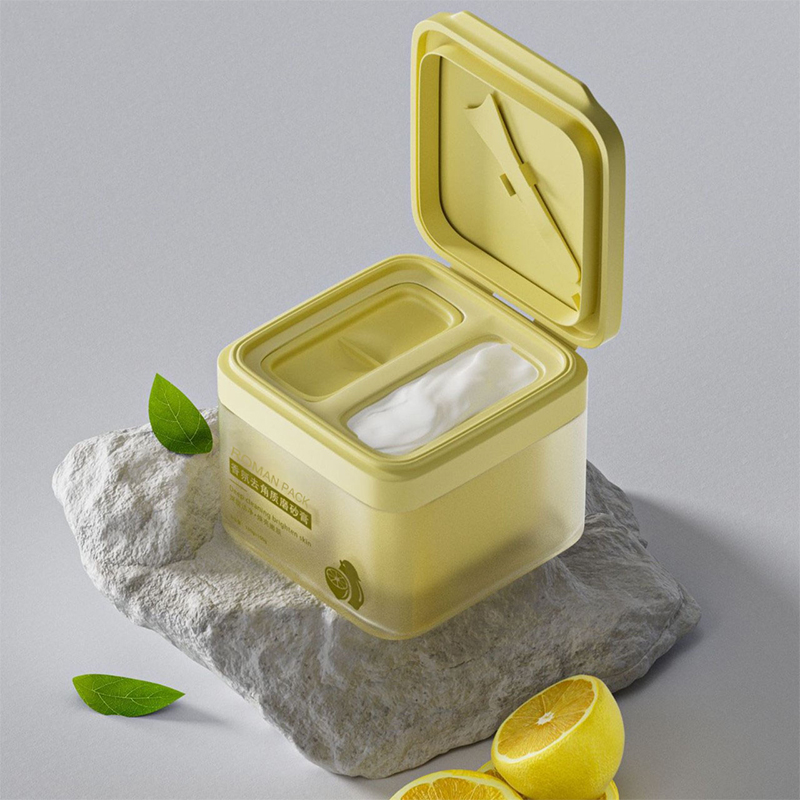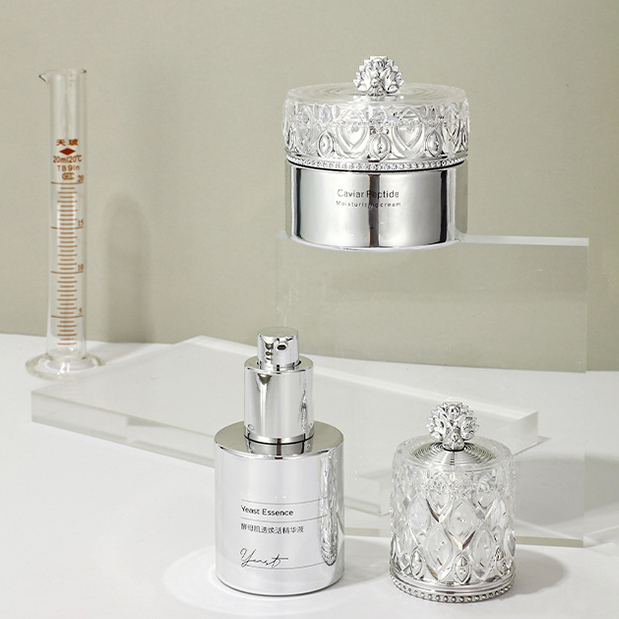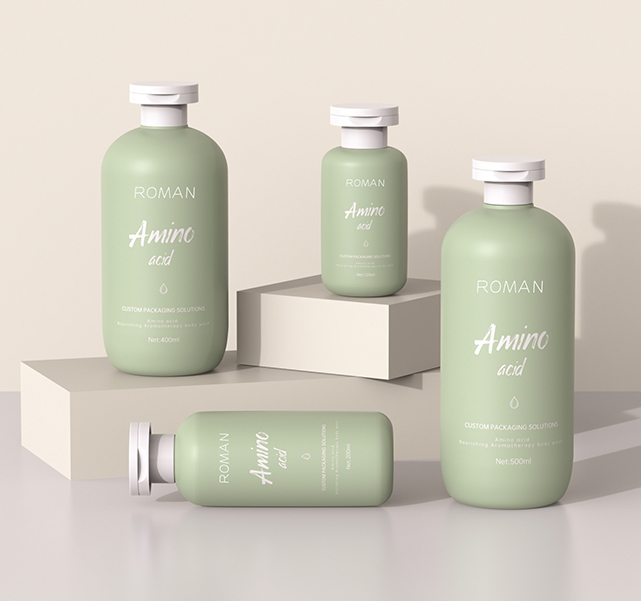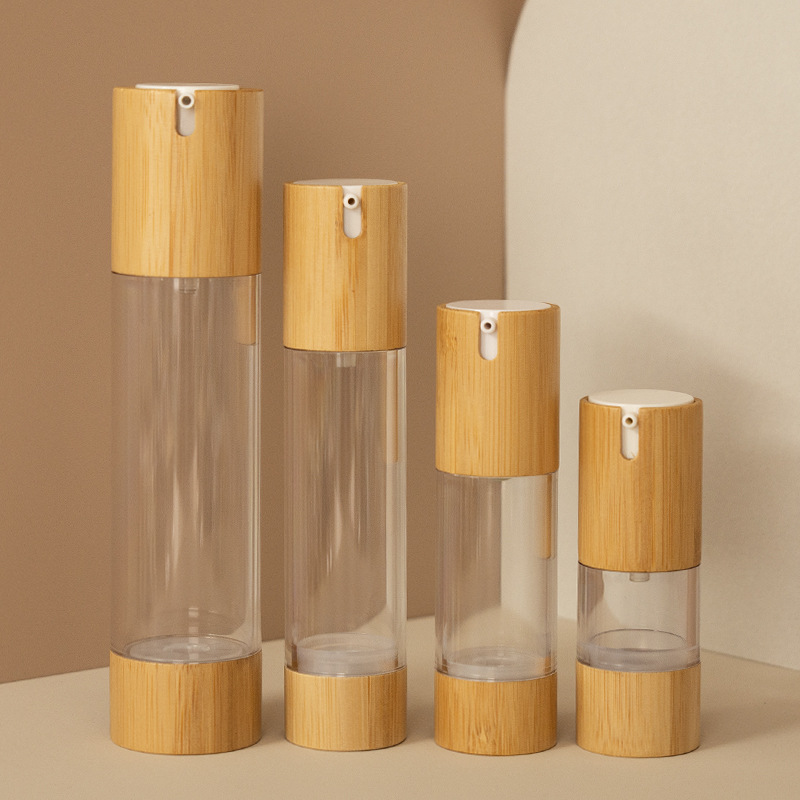"Small objects" in life hide great wisdom
Have you ever stopped in front of a cosmetics counter in a shopping mall to admire the dazzling array of perfume bottles? They are either elegant and delicate, or avant-garde and unique, or crystal clear, or smooth lines like works of art. Even if you have never opened the bottle cap to smell the fragrance, you may be attracted by these exquisite glass perfume bottles. This is not accidental. As a packaging form that is both practical and has a strong visual impact, perfume bottles have long surpassed the basic definition of "container" and have become a design language, a sensory experience, and even an aesthetic symbol in modern life.
In our daily life, perfume may not be a rigid need for everyone, but perfume bottles often have "added value" beyond the product itself. Many people buy perfumes, in addition to pursuing the fragrance itself, but are also impressed by the "first impression" of the perfume bottle at that moment. Whether it is placed on the dressing table or given as a gift to others, the emotions, taste and style conveyed by perfume bottles have become part of the lifestyle of modern people.
However, behind the amazing glass perfume bottles, there are actually hidden dialogues between "designers and engineers". These bottles must meet a number of key requirements: they must be beautiful enough to carry the brand's aesthetics and style; they must also be safe enough to protect the fragrance from volatilization and deterioration; and they must be easy to use so that consumers can have a pleasant and comfortable experience every time they spray. Under the seemingly simple "bottle body" is the intersection and integration of multiple fields such as design aesthetics, material science, structural engineering and consumer psychology.
In modern society, with the upgrading of consumption and the intensification of brand competition, glass perfume bottles are no longer just practical objects, but also carry brand stories, consumer aesthetics and the spirit of the times. From the simple and elegant classic shape of Chanel N°5 to the bow-knot bottleneck of Dior's Miss Dior series, from Jo Malone's minimalist British style to Hermès' hand-blown bottles, perfume bottles not only store fragrance, but are more like a carefully crafted work of art, becoming an emotional bridge between consumers and brands.
The realization of all this is inseparable from the physical and chemical advantages of the glass material itself. The non-reactive and corrosion-resistant properties of glass ensure the stability of perfume ingredients; its high transparency and plasticity give designers greater creative space; and with the continuous innovation of modern glass technology, such as the application of laser engraving, glaze printing, high-temperature casting and other technologies, the aesthetic expression of perfume bottles has been pushed to a new height. Behind the "high appearance" of glass perfume bottles is actually the crystallization of the joint interpretation of technology and art.
But because of this, it also brings a problem that cannot be ignored: in the process of pursuing visual beauty and artistic modeling, how not to sacrifice the practicality of the product? Or in other words, how can glass perfume bottles maintain a delicate balance between "function" and "form"? The tilt angle of a bottle mouth may affect the way the perfume is discharged; the carved texture of a bottle bottom may affect the stability when it is placed flat; the choice of a bottle color may even change the consumer's perception of the fragrance. All these design details must take into account both artistic expression and the smoothness and safety of the user experience - this is the most challenging part of glass perfume bottle design, and it is also the most worthy of discussion and appreciation.
In today's era of consumer-driven and increasingly personalized trends, perfume bottles have become a key part of brand building. They are no longer just a "carrier", but an important component of the entire product value perception. For consumers, a beautiful glass perfume bottle is not only a prelude to olfactory enjoyment, but also a tactile, visual and even psychological satisfaction. This multiple sensory stimulation greatly enhances the appeal of perfume and reshapes the definition of perfume in people's minds.
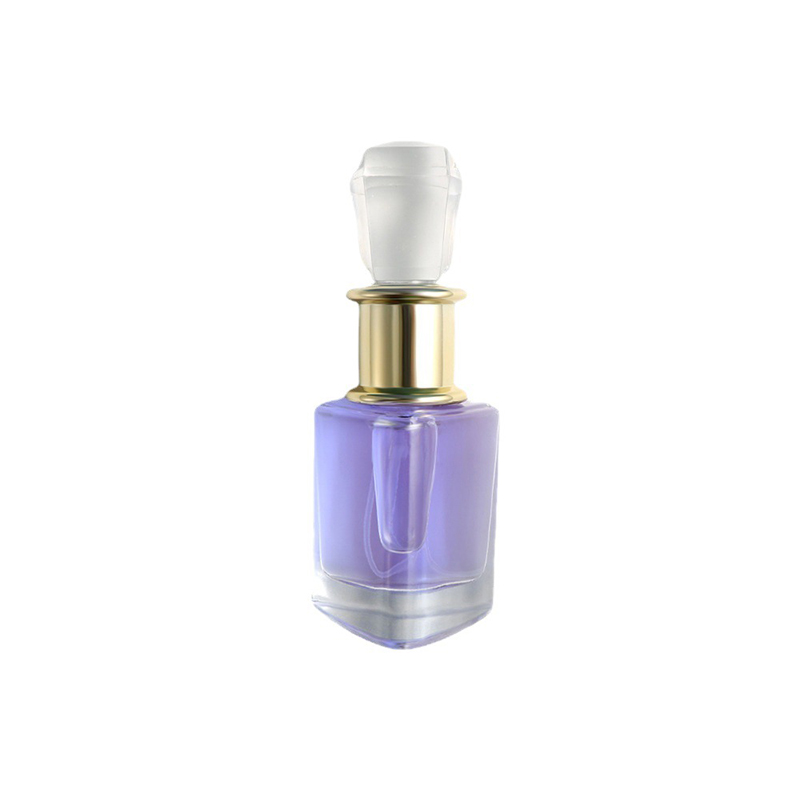 |
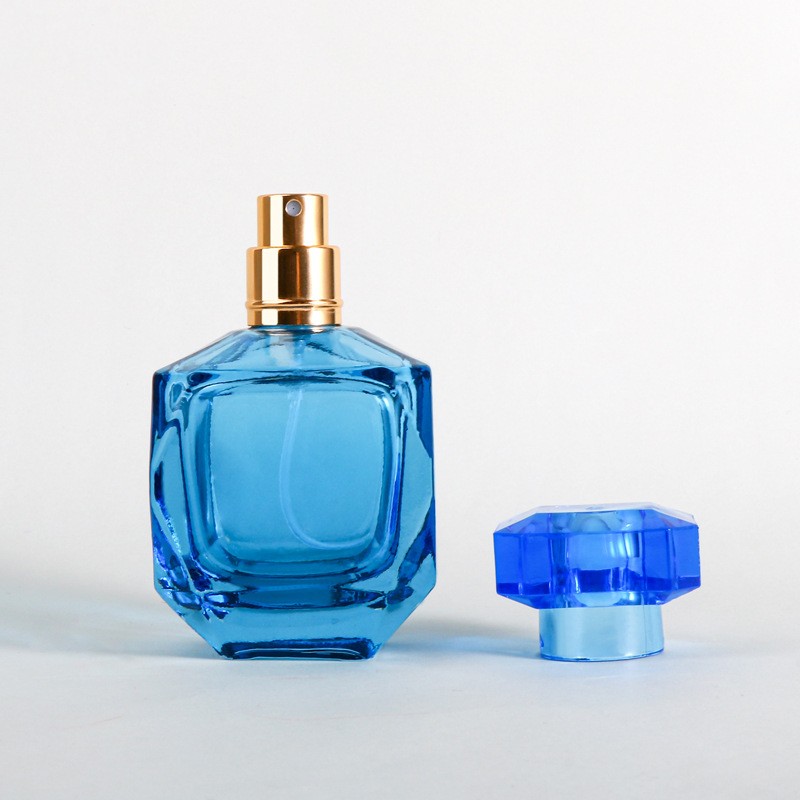 |
The basic function of perfume bottles: practicality first
Perfume bottles, as containers for perfume, play an extremely important role. It is not just a "bottle", but also the key to ensure that the quality of perfume remains unchanged and is easy for users to use. Glass perfume bottles integrate a number of scientific and engineering principles in terms of materials and design, striving to achieve the ultimate in practicality, ensuring that the preservation, carrying and use experience of perfume are impeccable.
Sealing and preservation of fragrance: the first step to protect the quality of perfume
Perfume, as a mixed liquid containing a variety of volatile organic compounds, contains both alcohol, natural essential oils and synthetic fragrances, which are easily affected by environmental factors. Oxygen, water vapor, temperature fluctuations and even light in the air may cause the decomposition, volatilization or oxidation of perfume ingredients, directly affecting the stability and service life of the perfume.
If the sealing performance of the perfume bottle is insufficient, these top fragrance molecules will be lost first, causing the overall fragrance structure of the perfume to be unbalanced, resulting in changes in the smell, and even producing pungent or peculiar smells. Therefore, sealing becomes the primary function of perfume bottle design and is the prerequisite for ensuring that the perfume is "eternally fragrant".
The biggest advantage of glass material is its extremely high chemical inertness. Compared with plastic containers, glass does not release harmful substances and does not react with the ingredients in perfume. Compared with metal, glass is not easily corroded by acid or alcohol, which avoids perfume deterioration or metallic taste contamination.
Glass has excellent density, making it an almost impermeable barrier. High-quality glass can effectively block air and moisture from entering the bottle, prevent the oxidation, deterioration or volatilization of perfume ingredients, and keep the fragrance of perfume stable and pure.
In addition to relying on the glass bottle itself, the design of the bottle mouth structure is also critical to the sealing performance. The bottle mouth is where the perfume bottle "contacts" the outside air, and poor sealing will cause the perfume to volatilize faster.
At present, the bottle mouth design of perfume bottles mainly has the following forms:
Screw-on seal: A tight lock is achieved through a spiral structure to prevent air from entering. Common in portable perfumes, and convenient to open and close repeatedly. High-end styles are often paired with silicone gaskets to improve sealing.
Press-type spray head: the most common, using metal springs and rubber sealing rings to ensure uniform spray and complete sealing when not in use to prevent leakage and air ingress.
Plug-in type: mostly used in retro designs, sealing is achieved by fitting glass or plastic plugs, but the sealing effect depends on the accuracy and fit of the plugs, and is usually not suitable for long-term sealing.
High-quality sealing design not only avoids the volatilization and oxidation of perfume, but also prevents liquid overflow, waste and pollution during use, reflecting the rigor of design and the care of user experience.
Convenience of use design: a combination of comfortable experience and functional efficiency
The design of the spray head directly affects the consumer's experience of use. A light and responsive spray head can bring a smooth spray experience, making users more willing to repeatedly purchase and use the perfume.
Modern perfume spray heads mostly use the principle of spring compression, and the design must ensure:
Moderate resistance: neither too easy to press to cause excessive spraying, nor too much effort to affect the comfort of use.
Fine and uniform spray: The nozzle aperture and nozzle design have been finely adjusted to make the sprayed perfume form a fine and uniform mist, enhancing the diffusion effect of the fragrance.
Anti-clogging design: Prevent perfume residue from clogging the nozzle to ensure smooth use for a long time.
High-quality nozzle materials and processes, such as corrosion-resistant stainless steel or coating treatment, also improve the durability and overall texture of the nozzle.
In addition to the nozzle, the shape and material texture of the bottle directly affect the user's holding experience. Designers usually design the bottle curve according to the size of the hand and the holding habits to make it ergonomic and avoid slipping or discomfort during use.
Balance between bottle size and weight: It is necessary to ensure sufficient capacity, but not too heavy to affect carrying.
Surface texture: Frosted or finely polished treatment is not only beautiful, but also adds friction and improves the grip.
Bottle neck and bottle mouth design: It is easy to hold with one hand and operate the nozzle with the other hand.
Although these details are inconspicuous, they greatly improve the comfort and convenience of users' daily use.
Consumers with different occasions and needs have different requirements for perfume capacity. The design will be segmented according to the positioning:
Portable small bottles (5-15ml): convenient for travel, the packaging design must be sealed and lightweight, easy to put in pockets or bags.
Standard capacity bottles (30-100ml): meet daily use, the design focuses on both aesthetics and stability.
Large capacity bottles (100ml or more): suitable for home or collection, the design is required to be stable and prevent accidental tipping.
Capacity control is also related to the nozzle design, which accurately controls the amount of each spray to avoid waste. Some high-end perfume bottles even have the function of adjusting the spray amount to meet the needs of different usage scenarios.
Scientific selection of materials: Why glass is the first choice for perfume bottles
Plastic bottles
Advantages: light, low cost, easy to shape
Disadvantages: poor chemical stability, easy to react with perfume; easy to adsorb fragrance components to change the fragrance; low appearance texture and easy to scratch.
Plastic bottles are often used for cheap or portable small bottles, but they cannot meet the quality and visual needs of high-end perfume brands.
Metal bottles
Advantages: strong and durable, light-proof; can be made into unique shapes
Disadvantages: easy to react with perfume ingredients to produce odor; opaque, unable to see the remaining amount; heavy texture.
Metal bottles are rarely used for perfume, but are occasionally used in special limited editions or gift boxes.
Glass bottles
Advantages: high chemical stability, does not affect the purity of perfume; excellent transparency, can present rich colors and luster; good plasticity, suitable for various shapes and designs; easy to recycle, good environmental protection.
Disadvantages: relatively heavy, fragile, need packaging protection.
Glass perfume bottles are the first choice of most high-end brands, perfectly balancing the preservation and aesthetic performance of perfume.
High-quality glass such as borosilicate glass has extremely strong corrosion resistance and can withstand long-term immersion in solvents such as alcohol without changes. Its high transparency and refractive properties make the perfume bottle present a crystal clear, shining and charming visual effect under light, increasing the product's appeal.
In addition, glass can achieve different color and texture effects, such as transparent, frosted, sandblasted, painted, etc., by adjusting the composition and production process to meet diverse design needs.
Glass can be processed into various unique shapes through various processes such as blowing, pressing, and mold forming. From classic geometric shapes to complex carved bottles, the plasticity of glass provides designers with unlimited creative space. At the same time, modern technologies such as laser engraving and 3D printing molds also help glass bottles achieve more precise and delicate details.
 |
 |
 |
 |
Design aesthetics: artistic expression
As a carrier of perfume, glass perfume bottles not only have the practical functions of protecting fragrance and facilitating use, but also are "artworks" with great visual and cultural expression. With its unique modeling language, exquisite surface craftsmanship, and emotional color matching, it conveys the brand's understanding of beauty and touches consumers' emotions.
Construction of visual appeal: the first impression of perfume bottles
The design of perfume bottles is the user's first perception of a perfume. It is like a "visual business card" of perfume. Before the fragrance experience is opened, it has already told users through visual language: what style this perfume is, what kind of emotion it belongs to, and what temperament it conveys.
The shape design of glass perfume bottles is often the core of design aesthetics. A successful bottle shape not only needs to be ergonomic and industrially feasible, but also should have artistic tension and be unforgettable at first sight.
The streamlined shape emphasizes the soft flow of curves, conveying the feeling of feminine softness, freedom, and lightness. For example, Jean Paul Gaultier's "Classique" perfume bottle is inspired by the female body, with smooth curves and great sensory appeal.
Use regular geometric shapes (such as cubes, cylinders, and pyramids) to convey the beauty of modernity, rationality, and order. The square bottle of Chanel No.5 has become a classic with its minimalist geometric structure. It removes all unnecessary decorations and symbolizes the "eternity and rationality" of perfume.
Use classical elements such as carvings, curved necks, and stoppered glass bottles to evoke people's fond memories of the past. Dior's "Miss Dior" series incorporates details such as retro bows and curved bottlenecks to create an elegant and romantic temperament.
Designers give the bottle different emotional dimensions through modeling design, so that users can be touched by visual language before the perfume is opened, and establish the first psychological recognition of the product.
Surface treatment process: the combination of artistic temperament and brand tonality
Glass bottles not only show their beauty in shape, but also can create a very personalized and textured appearance style through different surface treatment processes. Surface treatment is an important link between "material physics" and "visual artistry", and it is also a way of expression that deeply fits the brand tonality.
Frosted glass is processed by physical sandblasting or chemical etching to make the glass surface present a delicate and soft texture, visually reducing the reflective effect, giving people a hazy, mysterious and high-end aesthetic feeling.
By performing metal electroplating on the glass surface or bottle cap (commonly gold, silver, rose gold), a visual effect with a strong sense of gloss can be created. This type of process is often used to reflect the brand's luxury positioning and craftsmanship level.
Color spraying is the most commonly used and most diverse means of expression in the current perfume bottle design. Through the spraying process, the glass surface can be covered with pure color, gradient, metallic luster or matte coating to express the emotions and stories that the product wants to convey.
Visual output of brand culture: design is the expression of concept
A perfume bottle often carries the core concept of the brand and the emotional connection with consumers. Through elements such as appearance design, symbol application, and color matching language, the perfume bottle becomes a carrier for the visual output of brand culture.
Just like Chanel No.5 to Chanel and Miss Dior to Dior, an excellent perfume bottle design not only strikes a balance between functionality and artistry, but also becomes the most representative symbol of brand culture.
Chanel No.5: The straight lines, undecorated geometric bottle, and black and white color scheme coincide with the brand's philosophy of "simple but not simple", and are a model of modernist aesthetics.
Dior Miss Dior: Bow decoration, slender bottle, soft tones, emphasizing female elegance, romance and personality, is a microcosm of the brand's "floral world".
Tom Ford series: angular, heavy bottle cap, bold colors, reflecting Tom Ford's consistent sexy, cold and luxurious personality.
The brand constantly reiterates the visual language in the design, so that consumers can associate the brand's core and emotional value as soon as they see the bottle.
Designers often use some concrete or abstract images to trigger users' emotional resonance:
"Heart-shaped bottle" conveys the sweetness of love;
"Hourglass shape" represents the flow of time and memories;
"Carved rose pattern" symbolizes eternal beauty and vitality.
The visual elements of the perfume bottle become a bridge between the user's mind and olfactory memory, truly turning a product into an "aesthetic work" that can be collected, felt and recalled.
The magic of color and light and shadow: the charm of glass is infinitely magnified
The most attractive point of glass material is its unique light transmittance and refraction ability. This physical property provides designers with extremely rich light and shadow expression space. Through different thicknesses, colors and cutting angles, light can shuttle, refract and reflect in the bottle, presenting a crystal-like visual effect.
This is particularly common in high-end perfumes: such as Bvlgari's "Le Gemme" series, the bottle simulates gem cutting, combined with light reflection effect, it is extremely luxurious and ritual.
Color not only has a decorative function, but also undertakes the task of psychological suggestion and emotional guidance. In perfume bottles, different tones often imply the fragrance and tonality of the perfume, helping consumers form intuitive cognition:
Light pink: floral, soft, romantic, suitable for daily life;
Light blue or transparent: marine, citrus, fresh, energetic, suitable for summer;
Dark purple, dark green: oriental, woody, mysterious, sexy, suitable for night or winter;
Gold, black: amber, vetiver, rich, mature, and luxurious.
Designers choose corresponding tones according to the smell characteristics of perfume, making vision a prelude to olfactory experience. World.
The fusion of art and practicality
As a combination of function and art, glass perfume bottle design has always faced the challenge of how to achieve an ideal balance between the two. Practicality guarantees the quality and user experience of perfume, while artistry gives the perfume bottle visual and emotional value, making it a carrier of brand image. With the advancement of science and technology and the diversification of consumer demand, the continuous innovation of glass craftsmanship has provided more possibilities for solving this balance, pushing perfume bottles towards a more personalized and high-end future.
Innovation and breakthrough in glass craftsmanship: the combination of blowing technology, mold customization and hand-carving
The manufacturing process of glass perfume bottles directly determines the shape, texture and functionality of the bottle. Traditional glass blowing technology has long occupied an important position in perfume bottle design due to its flexibility and artistic expression. In recent years, modern technology combined with mold customization and hand-carving has made the shape of glass bottles richer and the details more refined.
The glass blowing process is to blow molten glass into a mold or blow it into shape by hand by craftsmen. Modern mechanized blowing technology combined with automated equipment not only ensures production efficiency, but also improves the accuracy and consistency of the bottle shape. At the same time, hand-blown perfume bottles are still widely used by high-end custom perfume bottles, giving each bottle a unique bubble, texture and irregular beauty, and increasing artistic taste.
For industrial production, mold design is the key to achieving complex shapes. Through 3D modeling and CNC machining technology, designers can pre-build fine bottle shapes, including detailed textures, concave and convex changes, and even precise logo reliefs. Mold customization ensures efficient production while also enabling artistic design to be accurately implemented.
The application of multi-layer mold structure allows multiple combinations of inner and outer layers of glass on the bottle to create a layered color and texture effect. For example, perfume bottles made with laminated glass technology can wrap colored glass or metal sheets in transparent outer glass to create a deep and rich visual experience.
After completing the basic bottle production, post-processing such as hand engraving, sandblasting, spraying, and electroplating are important links in artistic expression. Craftsmen use laser engraving or traditional hand-carving techniques to add exquisite patterns, brand logos or unique textures to glass bottles.
This process not only increases the aesthetic value of the bottle, but also enhances the tactile experience, allowing consumers to feel the details of the design when using it. Some high-end perfume bottles even combine gemstone inlays or precious metal decorations to show top craftsmanship.
How process innovation helps the development of personalized and high-end markets
With the increasing demand of consumers for personalized products, perfume bottle design has also entered a new stage with "customization" and "high-end" as the core. Process innovation provides a technical basis and expression space to achieve this goal.
Modern manufacturing technology makes small-batch and diversified production possible. Through modular design, digital mold manufacturing and 3D printing technology, brands can provide consumers with customized bottle bodies, colors and even bottle cap accessories.
Personalized customization not only satisfies consumers' pursuit of unique identity, but also strengthens the emotional bond between users and brands by participating in the design process. For example, consumers can choose to engrave, adjust the capacity, choose the bottle color, and even design a unique bottle texture. This sense of participation greatly enhances the collection value and satisfaction of the product.
High-end perfume brands are increasingly focusing on reflecting luxury through craftsmanship details. Ultra-thin glass bottles, high-transparency glass, and difficult embedded processes all place extremely high demands on the craftsmanship level.
Technology innovation makes the bottle lighter and more durable, with improved light transmittance, richer color levels, and more delicate details. In addition, innovative spraying processes (such as metallic color gradients and pearlescent coatings) give the bottle a strong visual impact, which greatly enhances the brand image and market competitiveness of the product.
Balancing challenges and solutions: the trade-off between extreme shape and safety of use
In the pursuit of artistry, the design of glass perfume bottles faces many practical challenges. Extreme appearance designs are often accompanied by problems of fragility, difficulty in holding, or inconvenience in use. How to strike a balance between aesthetics and function is a core problem faced by designers and engineers.
In order to pursue unique visual effects, many designers will design irregular shapes, sharp edges or ultra-thin glass wall thicknesses. Although these designs are visually very impactful, they also increase the risk of bottle damage.
In addition, overly complex bottle mouth or bottle cap designs may lead to reduced sealing performance and affect the preservation quality of perfume. At the same time, if the shape of the bottle is not ergonomic, the user may feel inconvenient or uncomfortable when spraying perfume.
To solve the above problems, designers and engineers use innovative structural designs to ensure the practicality of the bottle. For example, the thin-walled glass bottle is reinforced with an embedded support structure to make it both light and strong. The bottle mouth uses a precisely designed leak-proof seal to ensure that the perfume does not leak out.
In the design of the bottle cap, a magnetic suction or rotation locking structure is used to improve the safety and convenience of opening and closing. The pressing mechanism of the spray head has been tested for ergonomics, and the spring force and nozzle angle are adjusted to ensure smooth and comfortable use.
Some designs also combine silicone anti-slip pads or curved surface treatment of the bottle to improve the grip and anti-slip performance. These innovations make glass perfume bottles not only beautiful, but also extremely practical.
Interaction between consumer psychology and design decisions: How vision and touch affect purchasing behavior
Design is not only an artistic creation, but also a market behavior that profoundly affects consumers' purchasing decisions. Vision and touch are the two key channels for users to perceive products. How to grasp the interaction between the two in perfume bottle design is crucial to the brand's market performance.
Vision is the first sensory experience of consumers when they come into contact with a product. The unique bottle shape, color matching and surface texture directly affect consumers' first impression of perfume. Exquisite and recognizable designs can often quickly attract attention and improve the competitiveness of products when displayed.
Designers usually use color psychology and morphology to convey the odor tonality and brand tonality of perfume. For example, elegant pink represents a soft floral tonality, and deep black implies a mysterious oriental tonality. Visually predicting the smell helps consumers quickly establish a product impression.
In addition to vision, tactile experience is also an important factor in determining consumers' willingness to buy. The weight, texture, bottle mouth and spray head of the perfume bottle will affect user satisfaction.
Studies have shown that comfortable packaging can enhance the high-end feel and pleasure of use of the product. Glass perfume bottles are hard and warm, often giving people a sense of high quality, enhancing the brand's professionalism and trust.
When designing, detailed carvings, frosted surfaces, metal decorations, etc. can enrich the tactile experience, allowing consumers to feel the design's care and quality.
Future Outlook and Sustainable Development Trends
With the rapid advancement of science and technology and the increasing awareness of global environmental protection, glass perfume bottle design is facing unprecedented development opportunities and challenges. Future designs must not only maintain a delicate balance between practicality and artistry, but also actively respond to the concept of sustainable development, integrate intelligent technology, and meet consumers' dual needs for personalization and environmental protection.
New materials and new processes brought by scientific and technological progress promote the upgrade of glass perfume bottle design
As a packaging carrier that combines functionality and artistry, the design innovation and manufacturing process of glass perfume bottles are inseparable. In recent years, the breakthroughs in scientific and technological progress in the fields of materials science and manufacturing technology have greatly promoted the upgrade of glass perfume bottle design.
Although traditional glass has good transparency and chemical stability, its manufacturing process consumes a lot of energy, and its recycling efficiency needs to be improved. In recent years, scientific research institutions and manufacturing companies have been committed to developing low-energy, high-performance environmentally friendly glass materials. For example, adopting a more environmentally friendly raw material ratio, a glass formula that reduces the furnace temperature, and introducing a mixed production process that recyclable recycled glass powder.
This new type of glass not only retains high light transmittance and corrosion resistance, but also improves mechanical strength and reduces breakage rate, providing designers with a wider range of morphological possibilities. In the future, as green material technology matures, glass perfume bottles will achieve a better balance between environmental protection and performance.
The introduction of 3D printing and laser processing technology has opened up new paths for the complex modeling and detailed decoration of glass bottles. Digital design and manufacturing have achieved efficient conversion from concept to finished product, reducing the time and cost of traditional mold making.
Laser engraving technology can achieve nano-level texture engraving, giving the bottle an extremely delicate artistic effect. Combined with computer-aided design (CAD) and manufacturing (CAM), designers can more accurately control the thickness distribution, structural strength and optical properties of the bottle, achieving the best combination of artistic beauty and functional performance.
In order to break through the limitations of a single glass material, designers and manufacturers have tried to composite glass with metal, ceramics, plastics and other materials. For example, a glass bottle body is matched with a metal nozzle and decoration, or a polymer transparent coating is used to enhance the scratch resistance of the glass surface. This composite process not only enriches the texture and visual level of the bottle, but also improves durability and user experience.
Environmental protection concept integrated into design: the rise of recyclable materials and green manufacturing process
Environmental protection has become an irreversible trend in the global design industry, and glass perfume bottle design is no exception. Consumers and regulators are increasingly demanding environmentally friendly packaging, which has prompted the industry to actively explore green design paths.
As a recyclable material, the recycling rate of glass directly affects the environmental impact. Perfume bottle manufacturers are gradually adopting formulas containing a high proportion of recycled glass powder, which not only reduces the consumption of virgin materials, but also reduces carbon emissions in the manufacturing process.
By optimizing the recycling process and waste treatment process, companies can achieve a closed production loop and reduce the burden of industrial waste on the environment. At the same time, promoting the modularization and standardization of bottle design will help dismantle and recycle discarded bottles and improve overall resource utilization efficiency.
Energy consumption and pollution emissions in the manufacturing process are important considerations for environmentally friendly design. Modern manufacturing companies actively adopt energy-saving equipment, waste heat recovery systems and environmentally friendly additives to promote the transformation of factories to zero emissions and low carbonization.
Environmental protection is not only reflected in materials and processes, but also in design concepts. Simple and efficient design styles reduce unnecessary decorations and complex processes, and reduce manufacturing difficulty and resource consumption.
Reusable and refillable designs are also beginning to rise. Some brands have launched glass perfume bottles with replacement cores to encourage consumers to extend the life of the bottle and reduce disposable packaging waste.
Consumers' demand for environmental protection and personalization has increased, prompting continuous design innovation
Modern consumers' values and consumption habits have undergone profound changes, environmental awareness has generally increased, and personalized needs have become increasingly prominent. Glass perfume bottle design is responding to these trends and making continuous innovations.
More and more consumers are willing to pay for environmentally friendly packaging and give priority to products made of low-carbon and sustainable materials. Brands that use environmental protection as a selling point can win more loyal customers.
Therefore, the design of perfume bottles reflects the concept of environmental protection in material selection, production process and service life, which has become an important factor in attracting consumers. Environmentally friendly design is not only a brand responsibility, but also the core of market competitiveness.
The younger generation of consumers advocates individual expression and expects products to highlight their unique identity. The personalized customization service of glass perfume bottles covers bottle shape, color, lettering, packaging design and other aspects.
This customization trend drives designers to innovate continuously, combining artistic expression with practical functions to achieve a unique user experience. Personalization not only improves user satisfaction, but also increases product premium space.
The integration of cross-industry technology and design concepts injects new vitality into perfume bottle design. For example, cooperation in the fields of fashion, art and technology has spawned innovative products that integrate aesthetics, technology and environmental protection.
At the same time, the integration of cultural elements has also become an important direction for differentiated design. By combining local cultural symbols with modern technology, we can create story-rich products to meet the spiritual needs of consumers.
How will perfume bottle design continue to interpret the dynamic balance of "practicality and artistry"
In the face of the future, glass perfume bottle design needs to continue to explore new balance points between practicality and artistry, not only to ensure product quality and user experience, but also to meet the increasingly diversified aesthetic and emotional needs.
New materials, new processes and intelligent technologies provide designers with unprecedented freedom to design glass bottles that are lighter, stronger and more visually impactful. At the same time, through digital design and manufacturing, complex shapes and efficient production can be unified.
Future design will pay more attention to the integration of environmental protection attributes and aesthetic values. Green design is no longer a simple functional appeal, but an important part of aesthetic expression. The texture of natural textures and environmentally friendly materials has become a design highlight.
The design concept will change from "visible" to "visible, touchable and felt". Perfume bottles are not only visual works of art, but also a comprehensive carrier of tactile, olfactory and psychological experience.
Through ergonomic optimization, intelligent interactive design and personalized customization, the user experience can be fully improved to meet the higher expectations of future consumers for quality life.
The design of perfume bottles in the future will pay more attention to the transmission of cultural connotations and brand stories. Design is no longer an isolated aesthetic creation, but a bridge for emotional communication between brands and consumers. Through the combination of art and function, create products with emotional resonance.


 English
English Español
Español